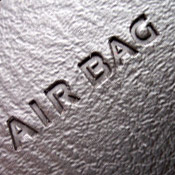7 Best Ways to Cut Auto Insurance Costs in Johnstown

No one in their right mind likes having to buy auto insurance, especially when they are paying too much.
Drivers have so many insurance companies to choose from, and although it’s nice to have a choice, so many choices can make it hard to find the best rates for your vehicles.
Consumers need to check auto insurance prices once or twice a year since insurance rates are constantly changing. Just because you had the best price a couple years back there may be better deals available now. Forget anything you know (or think you know) about auto insurance because I’m going to let you in on the secrets to the best way to properly buy coverages while reducing your premium.
These seven discounts can lower your rates
The cost of insuring your cars can be expensive, but you can get discounts to help offset the cost. Certain discounts will be applied when you quote, but a few must be inquired about prior to receiving the credit.
- Safe Drivers – Insureds without accidents can get discounts for up to 45% lower rates than drivers with accidents.
- Multi-car Discount – Buying insurance for more than one vehicle on one policy may reduce the rate for each vehicle.
- Military Rewards – Having a deployed family member can result in better rates.
- Discount for Swiching Early – Some insurance companies reward drivers for switching to them prior to your current policy expiring. The savings is around 10%.
- Memberships – Affiliation with a professional or civic organization could trigger savings on auto insurance.
- Accident Waiver – A few companies permit an accident before raising your premiums as long as you don’t have any claims for a set time period.
- New Vehicle Savings – Putting insurance coverage on a new car is cheaper compared to insuring an older model.
Keep in mind that some of the credits will not apply to the entire policy premium. The majority will only reduce individual premiums such as liability and collision coverage. Just because it seems like it’s possible to get free car insurance, companies wouldn’t make money that way. But any discount will bring down your overall premium however.
Don’t be fooled by advertising claims
Auto insurance providers like State Farm, GEICO and Progressive continually stream ads in print and on television. They all make an identical promise that you’ll save big after switching to them. But how can every company say the same thing?
Different companies can use profiling for the driver that is profitable for them. For instance, a preferred risk might be profiled as between 25 and 40, has no driving citations, and chooses high deductibles. A customer who matches those parameters will get the preferred rates and therefore will pay quite a bit less when switching companies.
Drivers who don’t qualify for this ideal profile must pay higher premiums which leads to the customer not buying. The ads state “customers who switch” not “everyone that quotes” save that kind of money. That’s the way insurance companies can confidently advertise the savings.
This illustrates why it’s extremely important to compare as many rates as you can. It’s not possible to predict the company that will have the lowest rates.
Auto insurance coverages explained
Learning about specific coverages of your policy helps when choosing appropriate coverage for your vehicles. Auto insurance terms can be difficult to understand and even agents have difficulty translating policy wording. Shown next are the usual coverages found on most auto insurance policies.
Comprehensive or Other Than Collision
Comprehensive insurance coverage pays for damage OTHER than collision with another vehicle or object. A deductible will apply and the remainder of the damage will be paid by comprehensive coverage.
Comprehensive coverage pays for things like hitting a deer, damage from flooding, hail damage, fire damage and hitting a bird. The highest amount you can receive from a comprehensive claim is the ACV or actual cash value, so if it’s not worth much more than your deductible it’s not worth carrying full coverage.
Medical costs insurance
Medical payments and Personal Injury Protection insurance kick in for immediate expenses like rehabilitation expenses, prosthetic devices, surgery, ambulance fees and X-ray expenses. They are often utilized in addition to your health insurance policy or if you lack health insurance entirely. They cover not only the driver but also the vehicle occupants in addition to any family member struck as a pedestrian. PIP coverage is not universally available and gives slightly broader coverage than med pay
Collision coverage protection
Collision coverage pays for damage to your vehicle from colliding with another car or object. You will need to pay your deductible then your collision coverage will kick in.
Collision can pay for claims like damaging your car on a curb, hitting a parking meter and hitting a mailbox. Paying for collision coverage can be pricey, so you might think about dropping it from older vehicles. It’s also possible to bump up the deductible to get cheaper collision coverage.
UM/UIM Coverage
Uninsured or Underinsured Motorist coverage gives you protection from other drivers when they either have no liability insurance or not enough. Covered losses include injuries to you and your family and also any damage incurred to your vehicle.
Since many Pennsylvania drivers only purchase the least amount of liability that is required (which is 15/30/5), their liability coverage can quickly be exhausted. That’s why carrying high Uninsured/Underinsured Motorist coverage is very important. Usually these coverages do not exceed the liability coverage limits.
Liability car insurance
This coverage protects you from damages or injuries you inflict on people or other property that is your fault. Coverage consists of three different limits, bodily injury per person, bodily injury per accident and property damage. You commonly see values of 50/100/50 which means $50,000 in coverage for each person’s injuries, $100,000 for the entire accident, and $50,000 of coverage for damaged propery. Another option is one limit called combined single limit (CSL) which limits claims to one amount with no separate limits for injury or property damage.
Liability coverage pays for things such as medical services, loss of income, structural damage and repair bills for other people’s vehicles. How much coverage you buy is a decision to put some thought into, but consider buying as high a limit as you can afford. Pennsylvania requires drivers to carry at least 15,000/30,000/5,000 but you should think about purchasing more coverage.
Some additional reading
Much more information about auto insurance in Pennsylvania can be found on the website for the Pennsylvania Insurance Department through this link. Visitors are able to file complaints about a company, read state legal mandates and laws, learn about insurance regulations, and learn about specific coverages.
In the end, you save
We just presented many ideas to get a better price on auto insurance. It’s most important to understand that the more rate quotes you have, the higher the chance of saving money. Consumers could even find that the lowest priced auto insurance comes from a company that doesn’t do a lot of advertising. These companies may cover specific market segments cheaper compared to the large companies like Allstate, GEICO and Progressive.
Cheaper auto insurance can be purchased online and with local Johnstown insurance agents, and you need to comparison shop both so you have a total pricing picture. There are still a few companies who do not offer the ability to get a quote online and these small insurance companies work with independent agents.

